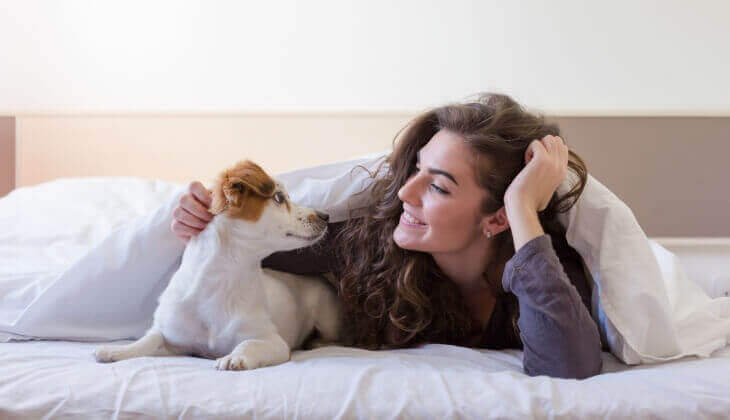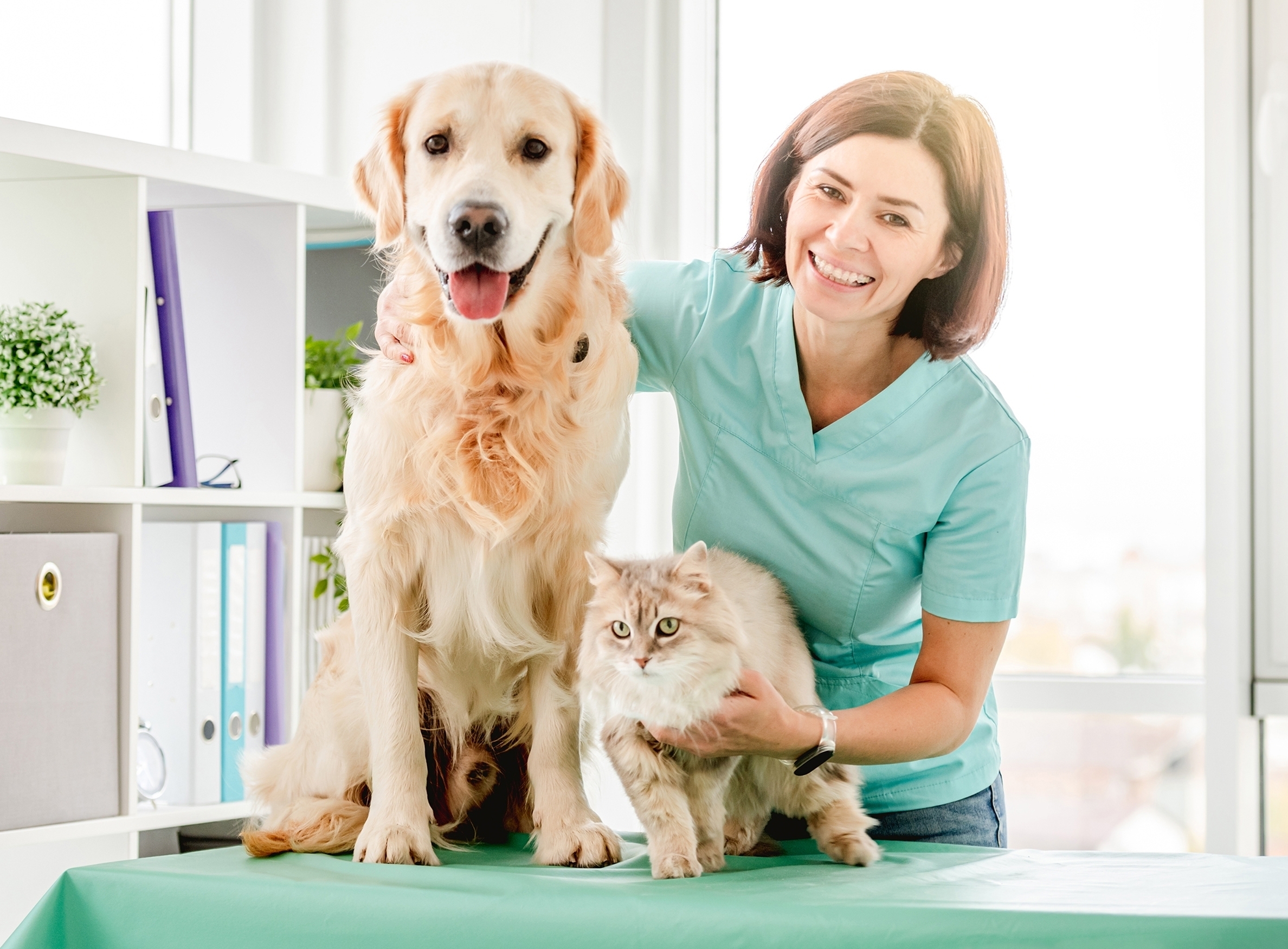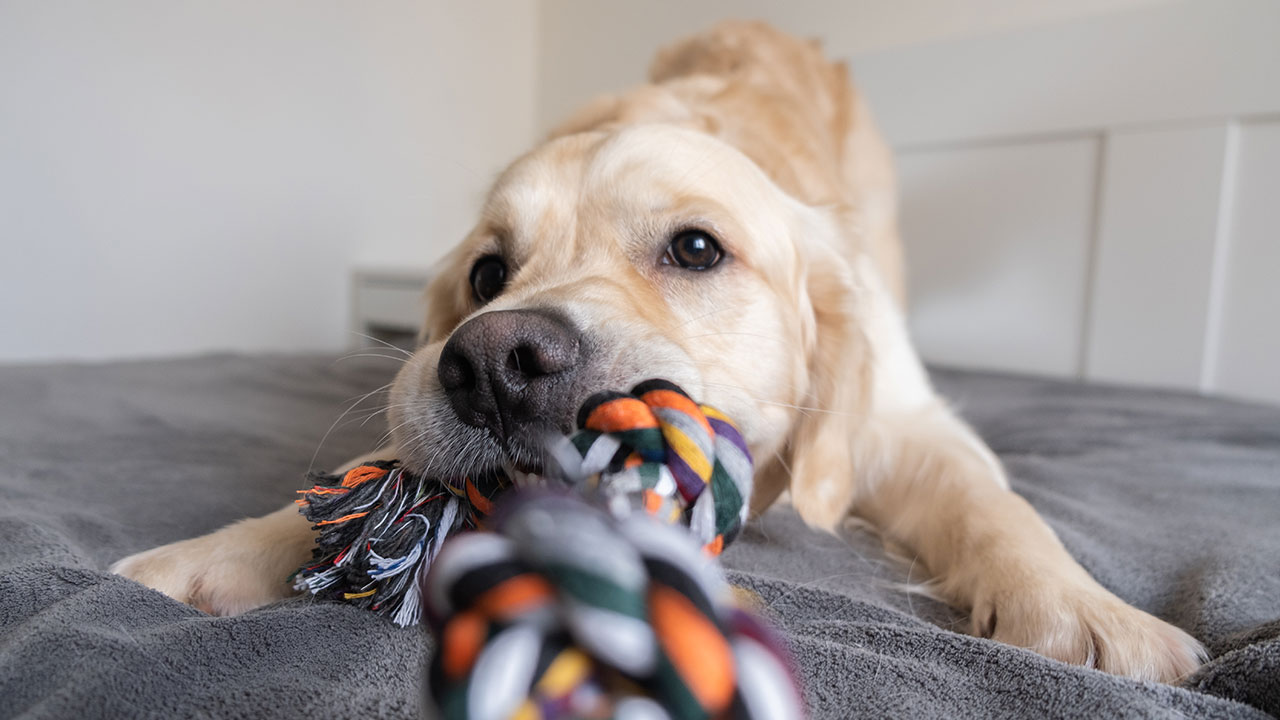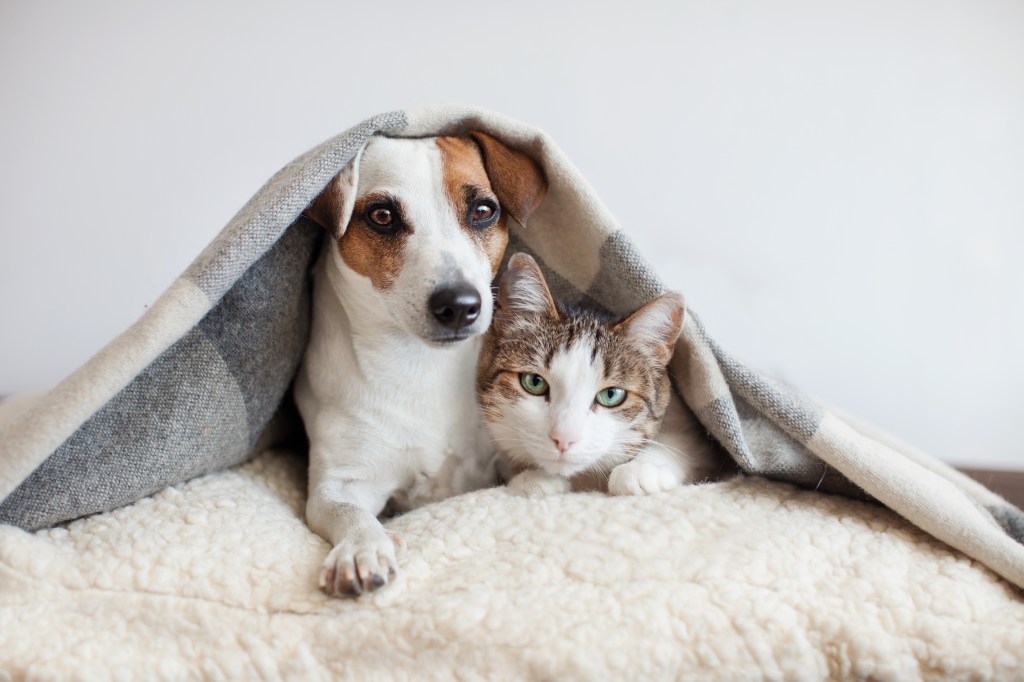You might be feeling anxious about taking your dog for a visit to the vet, whether for a routine exam or for a specific health concern. You have to consider the car ride, the waiting room – and then the actual exam itself. If you’re feeling nervous about all of these things, imagine how stressed out your dog is going to feel! But there are ways to reduce the stress level – before, during and after your visit – that will benefit both you and your dog.

BEFORE THE VISIT
The first thing you should do is make an appointment with your vet. This isn’t as obvious as it seems because many veterinary practices are busy, and if you want to be seen without an appointment, you may have to wait a while, which could become quite stressful for you and your nervous furry friend.
When you call the vet, be clear about the reason you are bringing your dog in for a visit, whether it’s for a specific concern or a routine exam.
Ask the receptionist if there are any prep instructions prior to the visit, for example, your vet may want you to bring in a stool sample from your dog, or they may ask that you not feed your dog before your appointment. It is also usually a good idea not to give a meal before a car ride.
Once your appointment is set, it’s important for you, as the pet owner, to understand what kind of visit your dog is scheduled for, so that you know what to expect. Different kinds of vet appointments may include:
- Problem/Treatment. When you have a specific concern regarding your dog and you want to bring him or her in for the vet to evaluate the issue and develop a treatment plan, if needed.
- Vaccinations. Administered at your first visit, perhaps after a new adoption, and then repeated on a regular schedule.
- Annual Exam. This important visit includes a general health check, vaccines as needed, and a status check to ensure preventive care including deworming, flea and tick treatments are up to date.
- Comprehensive Physical Exam. This will be a part of most visits to thoroughly evaluate your dog’s health status.
- Ongoing healthcare Visit. This type of visit may be important when management of chronic or ongoing health issues is needed for your dog. Examples of these issues include certain types of skin diseases or a health condition like diabetes.
You will want to prepare your dog for the visit. Most importantly, you should remain calm and relaxed. Your dog can sense if you are feeling nervous or stressed and will respond accordingly. One approach is to prepare your dog by “rehearsing” a clinical exam to get him or her used to being touched, specifically on the face, ears, paws and tail. If you are planning to use a carrier, put it out for a few days so your dog can get used to it. Place some toys, treats or a favourite blanket inside and if your dog goes in, give him or her warm praise.

THE VET’S OFFICE
Even if you have other animals at home, your dog may not be comfortable with the other animals you will likely encounter in the waiting room at the veterinary practitioner’s office. Keep your dog inside the carrier or securely close to you on a leash while you wait.
If your dog is easily upset, let your vet know and ask if they’re able to bring you into an exam room to wait.
You can also consider waiting in your car until you are called in.
Once you are in the exam room with the vet, give your dog a few minutes to get used to the surroundings and be sure to comfort and praise your pal while he or she is being examined by the vet or other practice staff. You should pay attention during your dog’s exam, and help the vet when asked. You can also bring a few of your dog’s favourite treats and if it’s ok with the vet, give them to your buddy after the appointment is finished as a reward or a distraction.
When you remain calm during the visit it will really make a difference in getting the best result.
Looking for a Veterinary Practitioner?
Your veterinary practitioner plays a big role in your pet’s health. Enter your location information and get a list of vets near you.
FIND A VETERINARY PRACTITIONER NEAR MECOMING HOME
What to do after you get home from your dog’s exam depends on what happened during the appointment. If medical treatment was needed, or if your dog had a health emergency, your vet may ask you to watch for further signs or changes and possibly to call if you see changes. The practice will also discuss with you any medications prescribed, including administration instructions or potential side effects, and discuss the time for a follow-up visit.
If you get home and something worries you, then be sure to call the vet’s office for help with any questions.
It is better to call sooner rather than later, and usually better to ask questions during the regular practice office hours.
At home, provide time and space to let your furry pal get reacquainted with his or her environment. Don’t rush your dog out of the carrier, but instead, let him or her come out at his or her own pace. Give your dog a treat and some cuddles to let him or her know that they did a good job at the vet. This will feel good for the both of you!






 Go To United States
Go To United States Austria
Austria Belgium
Belgium Czech Republic
Czech Republic Denmark
Denmark Europe
Europe Finland
Finland France
France Germany
Germany Greece
Greece Hungary
Hungary Ireland
Ireland Israel
Israel Italy
Italy Netherlands
Netherlands Norway
Norway Poland
Poland Portugal
Portugal Romania
Romania Saudi Arabia
Saudi Arabia Slovakia
Slovakia Spain
Spain Sweden
Sweden Switzerland
Switzerland Turkey
Turkey United Kingdom
United Kingdom